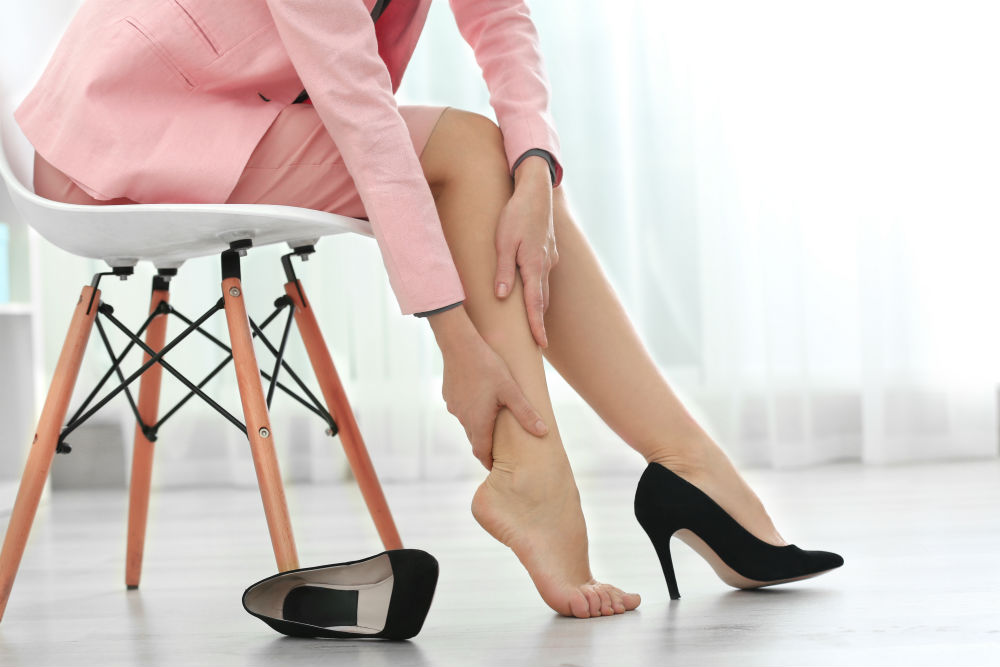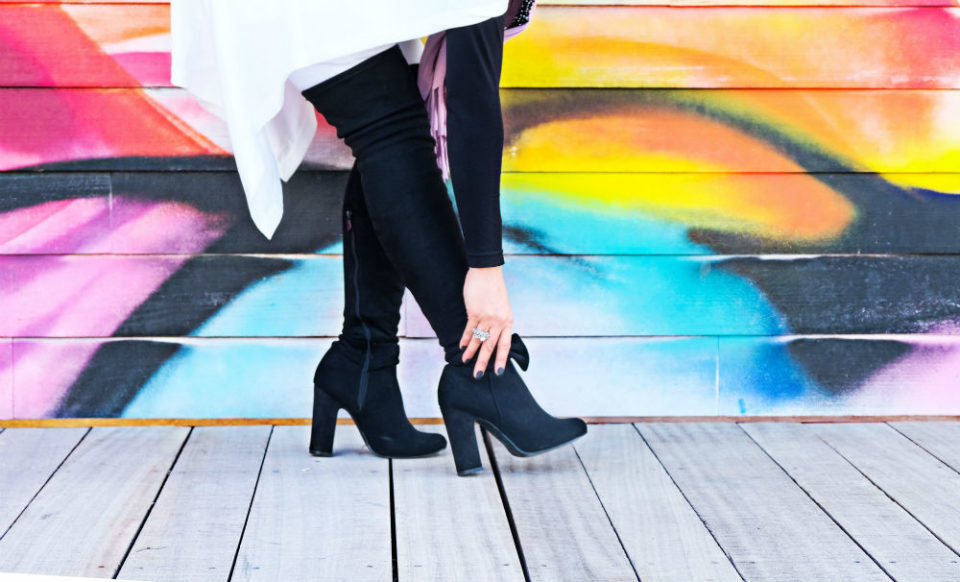
We girls love our pumps and high heels so much that we regularly pull them on, even though we end up in a fair bit of pain after wearing them for a little while. But is there really no other way? We have put together a few tips to help you avoid – or at least minimize – the pain of wearing high heels ?
Wear your high heels for longer with these 10 tips
First off, let’s get one thing straight: High heels will never be as comfortable as a pair of sneakers – that’s the sad truth. But we do have a few tips to help make wearing your high heels pain-free so they’ll be more comfortable:
- Vary your heel height and steer clear of very high heels
Pumps, high heels and wedges – the main difference between these styles of shoe is the height of the heel. Because we ladies usually have at least one pair of each of these types of shoes in our closet, you can take advantage of the different heel heights. If you regularly change the height of the heel you are wearing, this prevents your any uneven strain being placed on your muscles. This protects your feet, which means less pain. It’s always a good idea to spend some time wearing sneakers in between. Experts also advise only wearing high heels with a heel height of less than eight centimeters. Unfortunately, wearing heels higher than this for any length of time is not healthy.
And a tip for anyone who has barely worn high-heeled shoes before: It’s best to start off with a smaller heel and slowly work your way up to a bigger heel. This gives your feet time to gradually get used to heels.
- Pay attention to the insoles in your shoes
The high heels you buy should have a well-cushioned insole. This is something you should generally look for when buying shoes – and not just with high heels. Not only does a well-cushioned sole protect your joints, but it also helps ensure a straight posture and prevents excessive strain being placed on your feet. So when you’re shopping for high heels, look for a comfortable, high-quality insole. It will save you a good deal of pain further down the line. If you already have shoes that don’t have a very well-cushioned insole, you can buy gel cushions for the ball of the foot from the drugstore, which can be inserted in your shoes.
- Swap stilettos for block heels
The smaller the surface of the heel that is in contact with the ground, the more weight you bear on the balls of your feet. That’s why you’re better off choosing block heels over stilettos. Of course, most of us don’t want to give up our stilettos entirely. But usually it’s enough to simply reach for your block heels more often than your stilettos.

- Go up a size
If you have to choose between two sizes, when it comes to high heels you should always go for the bigger size. And not just because shoes that are too small risk giving you blisters and chafing. Wearing high heels also makes your feet swell anyway. Then you’ll be glad you went up a size – we promise.
- Shop for high heels in the evening
Our feet swell over the course of the day. So if you go shopping for shoes in the morning, you run the risk that they may be too small come the evening. That’s why you should always try high heels in particular in the evening. Only buy them if they fit you then.
- Wear high heels regularly
Yes, you read that right. If your feet are used to wearing high heels, they won’t hurt so much after you’ve been wearing heels.
- Give your feet some TLC afterward
After dancing the night away at a party or a long day at work, we’re probably all glad to finally be able to get out of our high heels. But it doesn’t end there. There’s plenty more we can do to benefit our feet. The best thing to do is to really stretch out your legs and feet the next morning. If yoga is your thing, then you can also do that to provide some relief for your feet. The “downward-facing dog” pose in particular is perfect for this. A hot bath can also help care for and relax your feet – ideally with bath salts containing minerals such as magnesium or sulfates. These help regenerate the tissues in your feet that have taken a punishing.
- Training for your feet
There is actually something you can do every day to train your feet so they’re better at adapting to high heels. And it’s so easy you can even do it while you’re brushing your teeth. Simply go up on tiptoes, hold this position for three seconds, and then lower your heels to the floor again. Then just repeat that a few times. You can also try rolling a towel up with your toes – that’s good for your feet too.

- Guard against blisters and chafing
Painful pressure marks, chafing and blisters – wearing high heels usually leaves us with these sore areas and even injuries. But that doesn’t have to be the case anymore. Our pjuractive mySKIN forms an invisible protective film immediately after it is applied, so you can now protect yourself and spare your feet that pain every time. Simply apply mySKIN to those areas that are prone to rubbing and – bingo! – your feet are protected.
- Tape your toes
It may sound strange at first, but it supposedly gives you better stability. Counting from your big toe, simply tape your third and fourth toes together using medical tape. It’ll give you a stable footing, meaning less cramping of the muscles in your feet when you’re wearing heels. Try it sometime!
Have fun wearing your high heels – and hopefully with less pain, or none at all ?